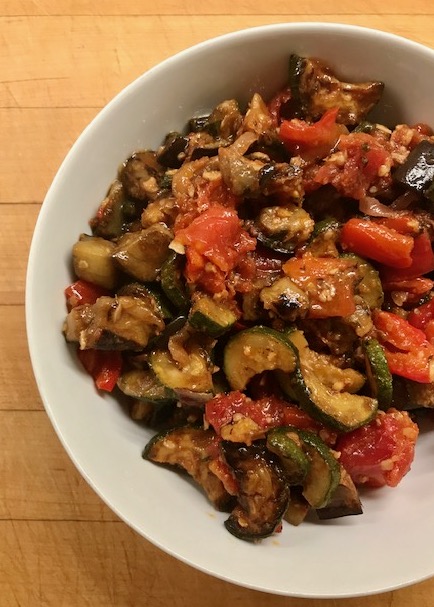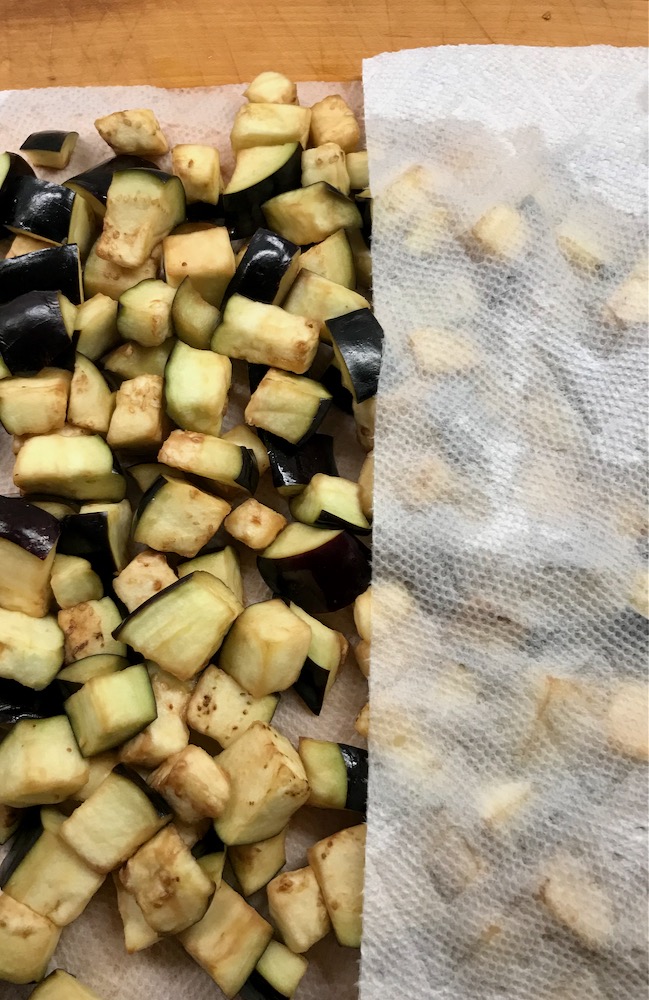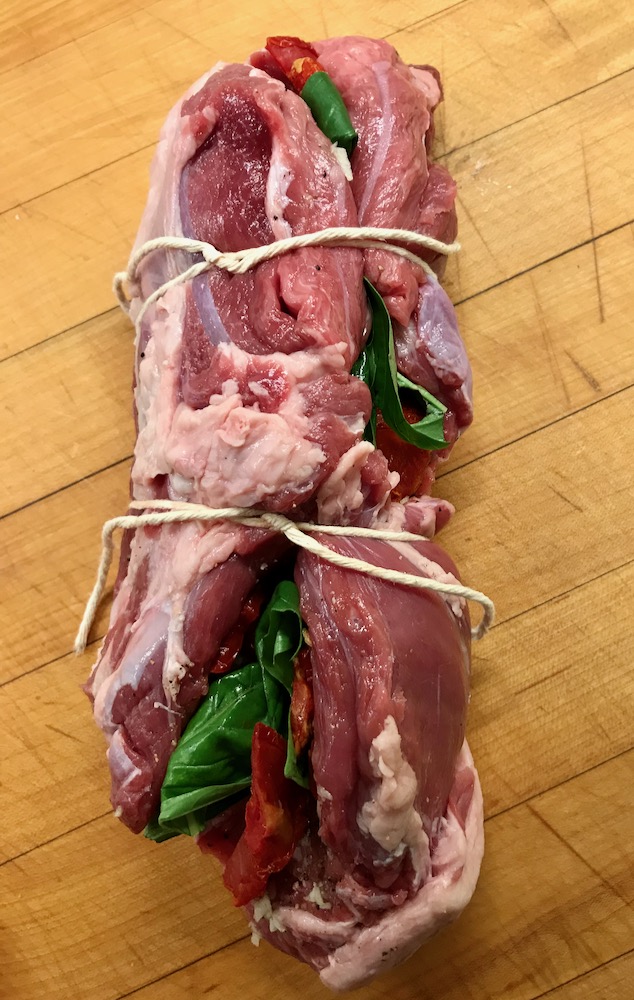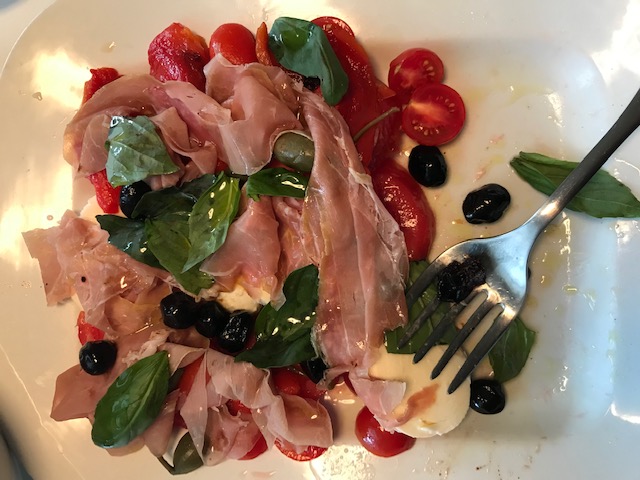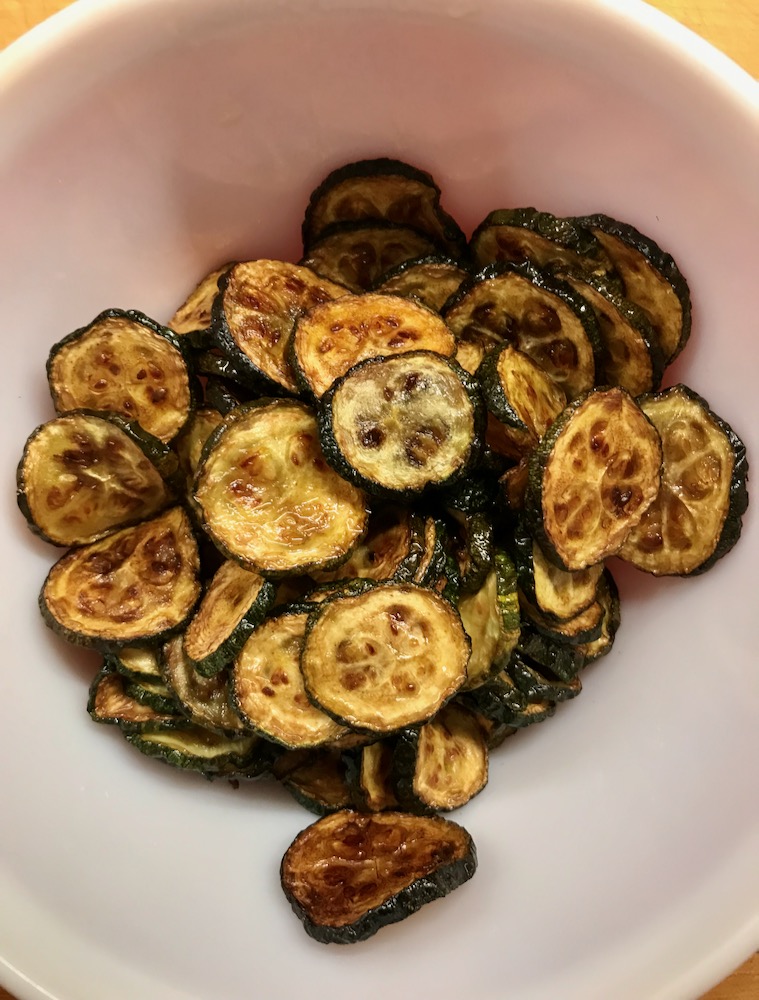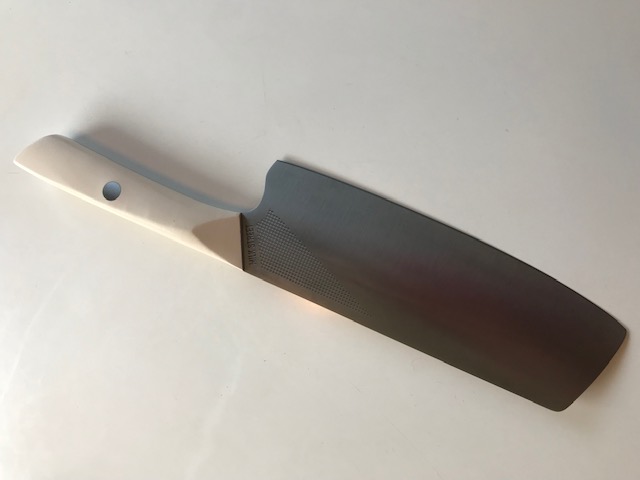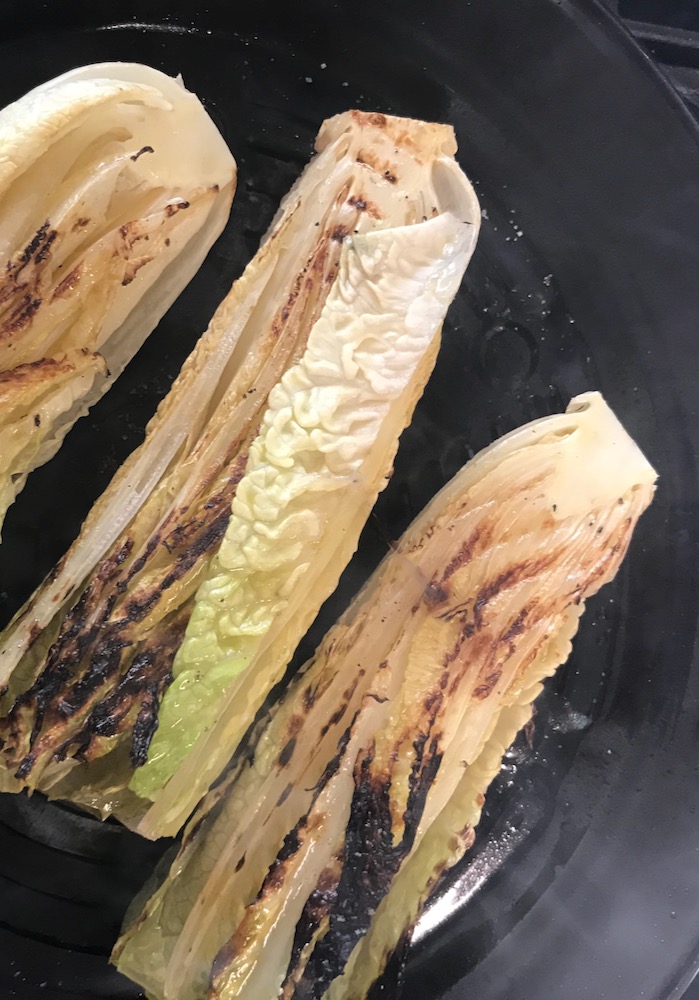My Pandemic Diary, Entry #85
Hello Fellow City Cooks,
One of the benefits of living in the same city neighborhood for some period of time is that we develop relationships with those we rely upon for services and support. Our contact with them can change from transactional to personal, helping to make the community where we live a home. These are people we’re always glad to see and if they’re not where we expect them to be, it’s cause for some anxiety: “Is something wrong? Are they okay?” It might be the dry cleaner, the man behind the register at a favorite bodega, my favorite butchers, Ray and Orlando, or the pharmacist who gives me my yearly flu shot and always remembers my name.
I certainly feel this way about the people I see every week at my neighborhood Greenmarket, both some customers and especially, the farmers. One in particular is a young, handsome farmer whose vegetables and herbs, and little plastic bins of popcorn, bring joy to my and so many others’ kitchens. I remember the year when he first appeared at our market, fresh from signing his mortgage on his new upstate farm. Now a decade later, every spring so many of us anticipate his return, bringing the first tiny heads of lettuces to mark the start of the growing season.
But there was also the year when he also brought deep sadness: his sweet wife, who was his partner on their farm, had died, leaving him with their two small daughters. Many of us had known of her cancer but we so hoped all their vitality and goodness would be her cure. It felt like the entire Greenmarket grieved.
A couple of weeks ago while I was chatting with him about how farmers are dealing with the increasing weather extremes and climate change, as well as the challenges of raising two now-teenage girls, he shared with me that love had come back into his life. He had met someone. I almost cried. I think I may have embarrassed him because he pivoted back to the weather and a farmer’s lot. “It’s always going to be something,” he said. “So we figure it out.” Good words to heed in this summer that has followed the winter of Covid.
Ratatouille
Summertime, even one with a hovering pandemic, always includes a cooking dilemma. I crave the fresh local produce and every week at my Greenmarket, I spend far too much money. But summer in New York City is a sweaty misery so just when we have the best ingredients of the year, it’s too hot to cook. We adjust, making more raw or barely cooked dishes, or things that can be prepped in advance and cooked quickly on top of the stove or in a counter-top appliance. I’m avoiding the subject of grilling because it’s not something I do, or can do. If you have a yard or the luxury of a residence away from your city apartment, then I envy you the adventure of outdoor cooking (and even more, of gardening). But I’ve never felt deprived to be without a grill, and frankly, I think many foods cooked on a grill aren’t so fabulous. My stove often does better, although real barbecue is another subject and good ones leave me in awe.
Left to my four-burner stove, I have summer-only favorites that I annually crave. Pasta alla cecca is made with salted raw ripe tomatoes, torn basil leaves, and crushed cloves of garlic left to sit at room temperature to become a sauce for warm spaghetti. It's also famed for being included in Nora Ephron’s stinging Heartburn, of which my little paperback copy, inscribed with an autograph and an added little scribbled illustration, both by Nora, is kept tucked among my cookbooks. Nora Ephron, along with Christopher Hitchens, are two of the writers I’ve so wished were still with us. Wouldn’t her wit and his razor-edged dicta have been a boon for keeping things in perspective during these past five years?
Back to this pasta -- use only the best field-grown local tomatoes or else don’t make it. I usually make mine with chopped whole tomatoes that I rarely bother to peel. I will sometimes also add small cubes of very fresh and pillowy mozzarella, knowing that the hot pasta will soften them, maybe slightly melting the cubes to become a bit stringy when pulled from the bowl of raw tomatoes. This recipe is easy to find online, but I thought you might enjoy this source, Kate Young’s literary/cooking trove, which itself is delightful, maybe off the radar, plus it’s a bit behind in being updated, a trait I’m familiar with.
Other favorites. In late summer when local bell peppers have ripened to red, I will stuff and roast them. I’m addicted to tiny Kirby cucumbers that I especially love in cottage cheese for lunch. Peach cobbler, topped with vanilla ice cream and made with sweet yellow New Jersey peaches, the kind that if left on my kitchen counter will go from too firm to over-ripe in a day, is on the menu for a summer dinner I’m making for friends this weekend.
I also must have gazpacho, pesto, crab cakes with potato salad, bowls of skinny yellow beans dressed only with good olive oil and French salt, and juicy tomato sandwiches smeared with mayonnaise and best eaten standing over the sink. And almost anything served at room temperature, including simple platters of sautéed vegetables, sliced seared rare steak maybe on a bed of local radicchio, roasted chicken thighs, or a well-black-peppered salad of tomatoes, peaches, prosciutto and buratta.
Last week as I was at my Greenmarket, it wasn’t hard to scan the bins of eggplants, peppers, zucchini, basil, and tomatoes and envision a pot of ratatouille.
I think that if you asked most people to describe ratatouille, they’d say that it’s a French vegetable stew, maybe followed with a shoulder shrug equivalent of “meh.” It’s hard to argue with such little enthusiasm when more often than not, it’s indeed a bland, wet mush.
There may be as many methods and recipes for ratatouille as there are for chili. Google it and everyone’s an expert, striving to add something new to this long-loved Provençal dish (Roast it! Grill it! Layer it! Cook it on a sheet pan! Add cumin!). But I’ve learned that if you make it meticulously, using only in-season ingredients, and resist the temptation to treat it as a quickly-made mélange, it can be amazing.
This recipe, by Martha Holberg in Fine Cooking magazine, taught me the winning, and as it turns out, very traditional cooking method. Holberg is an excellent teacher and along with her recipe, she has a primer that will re-set and renew any ideas you may have about ratatouille. In her recipe, she preps and cooks each element separately, keeping the flavors distinct and draining each of its liquid to prevent the dish from becoming soggy. She seasons the dish gradually through the cooking process, allowing the Provençal flavors from thyme, rosemary, garlic and basil to bloom along the way. I also noticed that she cuts each vegetable slightly differently, helping them to be distinguished from one another. She suggests taking the liquid drained from the cooked vegetables and reducing it into a glaze; mine didn’t produce enough liquid to do that so I merely added the final ingredients at the end. And since there is a generous amount of olive oil in this dish, it’s important to use a good one as its flavor will matter.
The result was superb. It was gorgeous served slightly warm. We had it alongside a small boneless leg of lamb roast I had stuffed with grated garlic, fresh basil and dried tomatoes. Two days later, I served it cold, with roasted chicken thighs. I wish I had made a double amount as it would have been exquisite as a topping for bruschetta, or tossed with pasta or a bowl of farro.
One proviso: this is not fast food. All the chopping and sequential cooking meant it took me about three hours to produce it start to finish. If you have enough stove-top space and pans, you could cook some of the vegetables simultaneously, which will help, but it will still not be quick. But I promise you, it will be worth it.
Main Course Salads
Spicy Shrimp and Chickpea Salad. I’m crazy about this salad by Yasmin Fahr that I found at New York Times Cooking. I had been making it so often my husband asked for a break. It’s perfect bowl food for dinner in front of a movie and I especially love how complex yet fresh the flavors are and how satisfying it can be without the expected addition of pasta. It’s easy to amend to your preferences or whatever you have on hand; for example, I usually only use lemons and skip the limes, and since we are moderate in our taste for spice, I leave out the chiles in the salad but keep the red pepper flakes with the shrimp. I will also usually reduce the chickpeas to one can, but add halved cherry tomatoes and chunks of red bell pepper and cucumber so to up the fresh vegetable volume.
If you don’t have a subscription to The Times’ Cooking archive, here’s that recipe:
1 medium lemon, zested and juiced
1 lime, zested and halved (I treat this as optional as I find the flavor too aggressive in this salad)
1 teaspoon Dijon mustard
5 tablespoons olive oil
Kosher salt and black pepper
2 (15-ounce) cans chickpeas, drained and rinsed
1/2 small red onion, diced (about 1/4 cup)
1 Fresno chile or jalapeño, cut into thin coins or seeded and diced (optional)
1 packed cup parsley leaves, roughly chopped
2 large garlic cloves, grated or minced
1/2 teaspoon red-pepper flakes
1 pound shrimp, peeled and deveined, patted dry
In a large serving bowl, combine the lemon zest and juice, lime zest and mustard. Whisk in 3 tablespoons olive oil until smooth; season with salt and pepper. Add the chickpeas, onion, chile and most of the parsley, reserving some for garnish. Toss to coat with the dressing. Season with salt and pepper; set aside (I let this marinade for about 20 minutes at room temperature).
Heat the remaining 2 tablespoons olive oil in a 12-inch skillet over medium-high until shimmering. Add the garlic and red-pepper flakes, and cook, stirring constantly, until fragrant, about 30 seconds, pulling the pan from the heat briefly if it seems like the garlic is burning.
Add the shrimp to the pan, season with salt and pepper and stir to coat with the garlic and oil. (I think you can toss the cleaned shrimp, olive oil, garlic and red pepper all together in a bowl and then cook together; this works especially well with a non-stick pan as you won’t need to add more oil.)
Cook until the shrimp are pink all over with a golden crust in parts, stirring and flipping the shrimp halfway through, about 4 to 6 minutes total. Turn off the heat, then squeeze the lime juice over the shrimp in the pan, stirring to combine and scraping up anything on the bottom of the pan to coat the shrimp.
Serve the shrimp on top of the salad. Garnish with the remaining parsley and serve.
Caprese Antipasto. Another wonderful New York Times Cooking salad is from David Tanis, my favorite of The Times’ food writers. He calls it Caprese Antipasto but to me it’s also a main course salad, lovely for lunch and perfect as a light supper. It’s an assemblage of prosciutto, mozzarella, tomatoes, roasted red peppers (you could use jarred ones but why if you can roast your own in-season), caperberries or capers, olives, basil, salt and good olive oil. Add good, crusty bread and it’s a summer delight, even if you can’t get to Capri, or anywhere else, this year.
Stanley Tucci’s Zucchini Pasta
If you are a Stanley Tucci fan (and who isn’t?), you may have watched “Searching for Italy,” his six-part series on CNN about Italian food and culture. The good news is that a second season is in production and said to be broadcast next year. For me, every episode I watched made me hungry and I wanted to cook it all. But the one that teased my appetite the most was the first, when he traveled to Campania, including the Amalfi Coast, returning with his wife to Lo Scoglio, a restaurant in Marina del Cantone. Tucci was haunted by the memory of a pasta dish -- made simply with spaghetti and sliced zucchini -- that he had had there once before. This time, on camera, he got the chef to show him how to make it. Watching this, I became haunted too, and I hadn’t even tasted it!
Fortunately, I had recorded the episode, and after watching the demo a couple of times and also Googling the dish, which has a name – Spaghetti alla Nerano – I found a recipe that exactly followed the Lo Scoglio chef’s demo. A few Sundays ago, I spent the afternoon carefully frying zucchini slices and making the dish. And Tucci was right. It’s superb. Light yet rich, and slightly herbal from the zucchini which have concentrated in flavor from cooking in the hot oil.
I used a 16 oz. bottle of sunflower oil and cooked the zucchini in batches, using a 2-inch-deep sauté pan. It’s important to drain the fried slices well on paper towels before you add them to a bowl to chill for at least two hours. The zucchini holds its shape (see my photo of the finished fried slices) until you mix it with the cooked pasta and then the softened slices will tear apart and the tender zucchini flesh will flavor all of the spaghetti (which is definitely the right pasta shape to use; trust the chef at Lo Scoglio).
While scanning the web for Spaghetti alla Nerano, I came upon this demo on YouTube. The cooking method is a little different, plus the cook uses a little garlic (I would not for this dish due to its delicate flavor, but what’s more personal a choice than whether to use garlic?!), but you may find this helpful and the cook is adorably earnest.
Milk Street’s Store
Milk Street has an e-store that sells kitchenware, grocery items, and lots of other wonderful things sourced from around the world. It’s a superb place to visit when you need a new kitchen tool, or especially for gifts for any home cook.
Recently, the nice folks at Milk Street were very generous in sending me two items sold at their store, both sent with no obligations. But since I love one of them, and I like the other, I wanted to tell you about them both. I’ve included links but they are not affiliate ones.
The item I love is a knife. I’ve written over the past year about upping my game when taking care of my knives. I’ve lamented about sharpening them during a pandemic, explored better ways to store them, and I updated my honing steel. Like a lot of things we buy, if we choose good ones to begin with, buy from knowledgeable suppliers, and take care of what we have, our knives will last a very long time. I hadn’t bought any new ones for years so it was a treat to open a box from Milk Street to find a Kitchin-to Knife.
It’s a cross between a nakiri Japanese vegetable knife and a cleaver, and it has a stainless-steel blade. Its milk-white handle is comfortable, plus beautiful. While the blade is large with some heft, it has balance, plus you can turn the blade on its side and use it like a bench scraper to transfer whatever you’ve cut. I’ve been using it primarily to chop vegetables (it certainly got a workout when I was making that ratatouille). It’s currently on sale for $79.95 which is 20% off its regular price of $99.95.
The other item that Chris Kimball sent me is called a Pazaar Közmatik, which is a Turkish stove-top pan that lets you cook very close to a flame or hot coals while protecting both the ingredients and the heat source. It looks like a black metal pie plate with slits and you place it directly on a lit burner (this only works on a gas stove, not electric) or a grill. It’s quite ingenious for its simplicity. I’ve tried it twice on my gas stove, first to char some romaine hearts for a charred Caesar salad, and then to char and blister red peppers. It was fabulous for the lettuce as I got a quick char without making the whole romaine heart limp, plus it protects the burner.
I was less happy with how the peppers turned out; while the skins did char and blister quickly and successfully, the peppers themselves stayed almost raw which was not what I was going for; once blistered, I needed to place the peppers into a hot oven so that they would cook and soften. But the pan works as promised and as long as you know what it can and can’t do given what you’re making, it could be a really handy thing to have among your pots and pans. I can’t speak to using it on a grill but given how it worked on my stove, I’d think it would be even more effective. Two other pluses: it cleans easily and is as light as a feather. It costs $42.95 which seems a little high given what it is, but if you use it often, the per-use cost will drop.
Poetry For What Ails Us, and Wow, Have We Been Ailing
William Sieghart is an interesting Englishman with a distinguished career in arts and letters, as well as being an astute and lifelong reader and promulgator of poetry. He has established poetry prizes, created England’s National Poetry Day, and he has published a number of poetry anthologies, including a favorite of mine that I purchased called The Poetry Pharmacy.*
Its subtitle is “Tried-And-True Prescriptions for the Heart, Mind and Soul,” and if we ever needed this kind of soulful self-medicating, it’s been the past couple of years. Maybe even a few more back. In any case, Mr. Sieghart, who is not a poet but a lover of poetry, has selected poems for this volume to give us advice and comfort, helping to cure more than fifty contemporary ailments. For instance, he has chosen poems to treat Anxiety, Old Age, Failure to Live in the Moment, Unrequited Love, Aging Parents, Oppression, and Regret. As he writes in his introduction, “This idea, that there can be a therapeutic power to a poem, is at the heart of The Poetry Pharmacy. But that therapeutic power only exists if you can find the right poem for the right state of mind. This book aims to help by gathering poems which I know from experience will help people through most conceivable difficulties of day-to-day life.”
Even if you’ve never liked poetry, or find it intimidating or impenetrable, I think you may still find this slim red and ribboned volume to be a comfort, maybe even the source of answers at a time when many of us are feeling so vulnerable.
I’ll finish by sharing his prescription for anyone suffering from “News Overload” (he also suggests it for depression, disillusionment, or pessimism). It’s a poem by Scottish poet and author Sheenagh Pugh, and I thought its optimism might be appreciated, especially right now.
Sometimes
By Sheenagh Pugh
Sometimes things don’t go, after all,
from bad to worse. Some years, muscadel
faces down frost; green thrives; the crops don’t fail;
sometimes a man aims high, and all goes well.
A people sometimes will step back from war;
elect an honest man, decide they care
enough, that they can’t leave some stranger poor.
Some men become what they were born for.
Sometimes our best efforts do not go
amiss, sometimes we do as we meant to.
The sun will sometimes melt a field of sorrow
that seemed hard frozen: may it happen for you.
I will add my own wish to Pugh’s poem: may it happen for all of us.
Stay safe, stay engaged, and have a nice dinner.
Kate McDonough
*The City Cook may contain affiliate links whereby The City Cook may receive commissions if you choose to purchase through them. There is no extra cost to you if you use these links. The City Cook also sometimes receives free review copies of cookbooks, both hardcover and e-galleys, from publishers. There are no obligations or promises made in exchange for our receiving these books.
